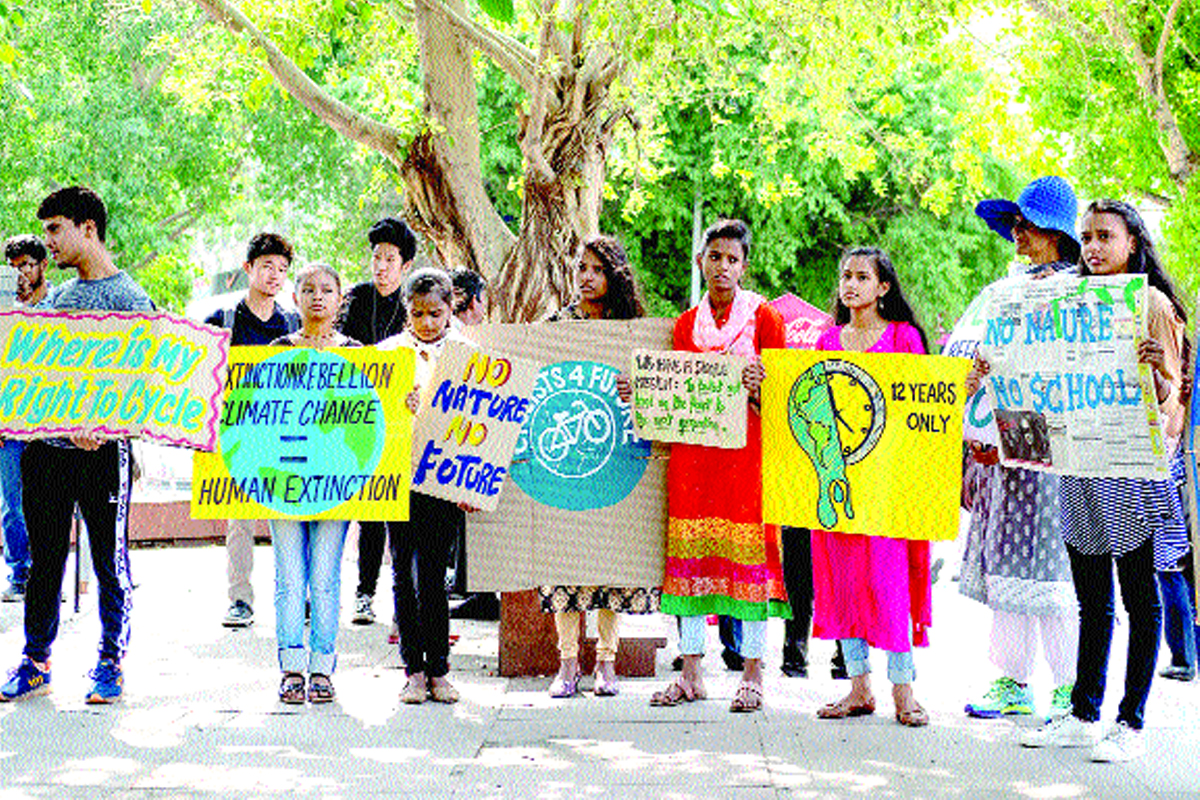India to add 179 million people to its working age population by 2045
At the moment, India's working-age population is around 961 million and the unemployment rate is at a five-year low.
There’s growing momentum to effectively leverage the power of education in addressing climate change.

In September 2019, when more than four million youth — majorly high school students — took to the streets in a global strike demanding greater and quicker political and corporate climate actions, it triggered a mass movement for combating climate change. It also had an implicit message — as the younger generation would witness the increasing impact of the unfolding climate crises, they need to be an integral part of solutions.
For that, climate-aligned education, among other avenues, has a fundamental role for two specific and interlinked reasons. First, an effective response to climate change requires a systemic shift towards climate-conscious decision-making, starting at the individual level. Second, local socio-economic and environmental conditions characterise impacts of the global climate change problem, thereby necessitating community-driven, bottom-up solutions.
Advertisement
With climate impact becoming more evident than ever before, awareness levels across demographics and geographies are rising. Such increasing levels of climate awareness, however, are not resulting in any sizeable action. That gap is primarily rooted in the existing school curricula globally, which considers climate change an additional topic, if at all, but not an integral aspect.
Advertisement
Thus, awareness levels are not transiting to climate-conscious behavioural development. For instance, according to a recent study, if only 16 per cent of school students in high/middle-income countries were to receive a climate-aligned education, the world could witness a drawdown of 19 gigatons of carbon dioxide emissions by 2050.
Conceptualising climate education
In the last decade, global leaders and subject experts have vouched towards greening the economy. A more fundamental precursor to such ideas, however, should be the need to green the education system — comprising curricula, starting at the primary level, which integrates climate-aligned experiential learning while also building critical thinking, problem-solving and collaborative skills. Such an education system will not only facilitate sustainable decision-making abilities among students but also make it easier to green the economy at a larger speed and on a bigger scale.
Globally, there is a growing momentum to effectively leverage the power of education in addressing climate change and its associated externalities. Both parents and teachers in several survey-based studies have indicated that climate change should be taught in schools. While certain schools, including in India, are making concerted efforts to integrate climate change into their curriculum, such initiatives seem to be confined to certain strata, resulting in limited impact. Moreover, even if teachers are willing to introduce the concepts of climate change and solutions, they have little knowledge and training in the matter. Not just within the school curriculum, there has been a growing demand for climate-aligned courses and skill development at higher education levels as well.
Several noteworthy climate change model courses have emerged to serve the growing demand for green skills across the globe. Building on such small yet positive developments worldwide, a systemic shift premised on greening the education system can mainstream and democratise climate change education. Successful models across the world already exist; those just need to be replicated and scaled through practical long-term policy actions. At the national and sub-national levels, those policies or programmes should broadly promote integration of interdisciplinary climate change education across subjects; project-based experiential learning, particularly at local levels, and training of teachers to scale climate educators.
Opportunities in India
As one of the major emerging economies and the largest democracy, India has a key role in global climate actions. With the country being ranked as amongst the most climate-vulnerable ones, and with prevalent environmental issues such as air pollution, climate change education can also advance solutions to local problems with the active participation of students and community stakeholders.
Currently, India is one of the few countries where environmental education is compulsory, but that is limited to just textbook learning. Given such a landscape, the National Education Policy 2020, which seeks to promote an experiential learning system, can be effectively leveraged to uptake and mainstream climate change education within the school curriculum.
For its realisation, three key immediate steps should be pursued by the public and private stakeholders concerned — develop an advisory coalition of experts to issue a directive towards greening the education system within the framework of NEP; continue to make concerted efforts to develop higher education curricula which are aligned to serve the growing demand of green skills, and seek to explore global collaborations for knowledge exchange on best practices in climate change education. Such multi-level and multi-stakeholder efforts will accelerate the country’s transition to a low-carbon economy and help in emerging as a champion in greening the education system.
India is one of the youngest countries with the average age group being 29 years. With more than 300 million of its population comprising school and college students, inculcating pro-climate social and behavioural change via a green education system can unleash the untapped potential of climate-conscious citizens. Resultantly, such a shift will help draw down per capita carbon footprint and serve the growing interdisciplinary demand of climate-aligned jobs and the economy.
The writer is fellow, Anant Fellowship for Climate Action, and a recent Master’s of public policy from the University of Chicago.
Advertisement